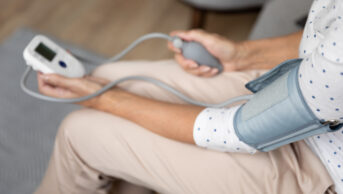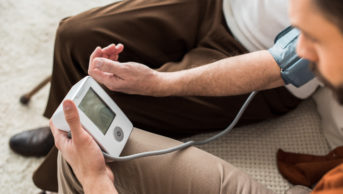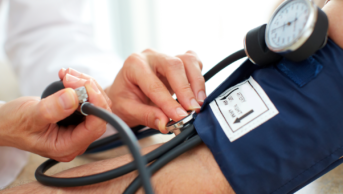
British Heart Foundation
Taking two antihypertensive drugs at a quarter dose is as effective in lowering blood pressure as a full-dose of one drug, a meta-analysis[1]
has found.
In the review of 42 studies, the dosing approach was also associated with fewer adverse events compared with standard-dose monotherapy.
Most comparisons (n=38) included in the review looked at quarter-dose monotherapy with placebo and showed an average blood pressure reduction of –4.7 to –2.4mmHg. Seven studies compared dual quarter-dose therapy versus placebo, resulting in an average blood pressure reduction of –6.7 to –4.4mmHg.
There was no significant difference in blood pressure control with dual quarter-dose therapy compared with standard-dose monotherapy. And two small studies that included quadruple quarter-dose therapy showed that this was able to further increase efficacy, with a –13.1 to –7.9mmHg reduction in blood pressure versus monotherapy.
The risk of adverse events with dual quarter-therapy was also significantly lower than that seen with standard-dose monotherapy, and comparable to placebo.
Lead author Anthony Rodgers, a professor at the George Institute for Global Health in Sydney, says that many people who receive treatment for high blood pressure remain uncontrolled.
“The key reason is that many people only receive one drug and all blood pressure lowering drugs when used by themselves are not very effective,” says Rodgers.
He explains that antihypertensives have shallow dose-response curves, meaning the majority of benefit is already achieved at low doses. And the benefits of each antihypertensive are mostly additive to each other.
Reporting in Hypertension, the researchers suggest that dual quarter-dose therapy might be preferable for patients on standard-dose monotherapy, given that it confers similar efficacy with better tolerability.
Additionally, it might be better to add a quarter-dose of a different antihypertensive therapy to a patient’s standard-dose monotherapy, rather than doubling the dose of the monotherapy, as this is likely to achieve a greater reduction in blood pressure, they say.
However, more research is needed, particularly into the efficacy and tolerability of triple or quadruple quarter-dose combinations.
“The key thing is larger, longer term trials testing this new paradigm against optimal usual care,” says Rodgers. “We have one such trial just starting in Australia funded by the National Health and Medical Research Council, testing whether quadruple quarter-dose therapy can improve on guideline-based usual care.”
Mike Knapton, associate medical director of the British Heart Foundation, says it is estimated that blood pressure treatment could be improved for around a third of patients. “Finding new ways to improve treatments and reduce people’s blood pressure levels is vital if we are to help save lives,” he says.
However, he says that prescribers don’t yet have enough evidence to start recommending this approach in practice.
“Further studies need to be undertaken to see if low doses of blood pressure lowering drugs, taken in combination, result in improved outcomes for patients by reducing the number of heart attacks, strokes, and deaths from heart and circulatory disease.”
References
[1] Bennett A, Chow CK, Chou M et al. Efficacy and safety of quarter-dose blood pressure-lowering agents: a systematic review and meta-analysis of randomized controlled trials. Hypertension 2017; doi: 10.1161/HYPERTENSIONAHA.117.09202


